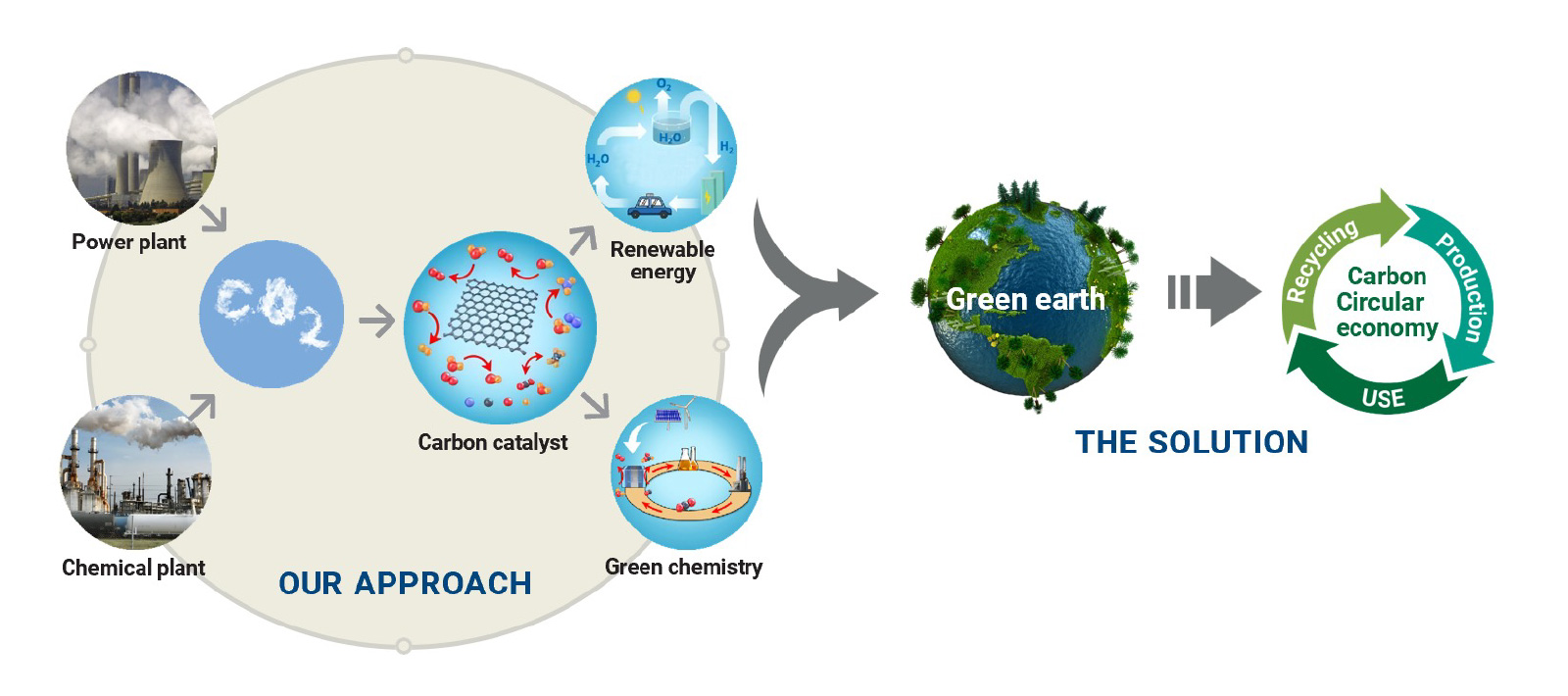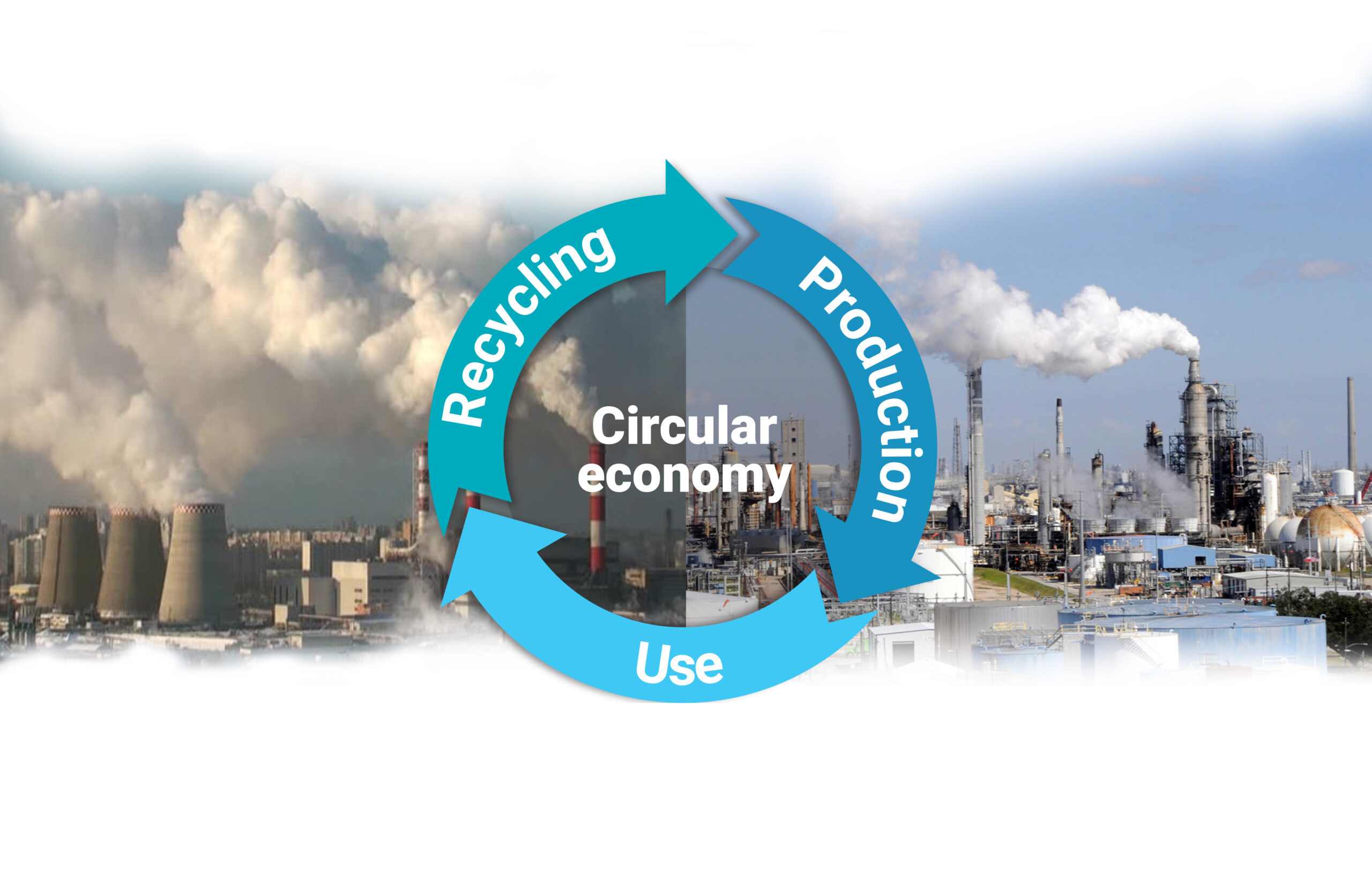Carbon Science and Innovation for clean production of energy and chemicals

The ARC Centre of Excellence for Carbon Science & Innovation (CSI) aims to advance scientific knowledge, enabling transformative carbon catalyst technologies for revolutionising energy and traditional chemical industries. This is vital for the Australian economy and will enhance Australia’s role in international efforts to achieve net-zero emissions using new scientific discoveries and innovative technologies emerging from CSI.
The Global Challenge
Greenhouse gas (mainly carbon dioxide) emissions cause climate extremes and serious air pollution. International agreements demand innovations to cut carbon emissions by 75% before 2030, and reach net-zero carbon emissions by 2050.
The energy, transportation, and chemical sectors are the backbone of Australian industry, but they are also among the most intensive greenhouse gas producers. Transportation and power generation emit huge volumes of CO2 due to the burning of fossil fuels. Critically, 97% of electrical power in Australia is generated by burning coal and natural gas. Chemical production also produces a large amount of greenhouse gas wastes. For example, the industrial-scale production of ammonia for fertiliser, pharmaceuticals, and dyes relies on the century-old Haber–Bosch process. This energy-intensive process requires high temperatures (400–500°C) and high pressures (150–300 atm). The ammonia synthesis industry alone accounts for 2% of the world’s energy consumption and 1.5% of total global CO2 emissions.
Carbon emissions have caused global warming and consequently climate extremes, such as the recent large-scale droughts, bush fires, and flooding in Australia, costing us billions of dollars and priceless human lives. The current carbon (fossil)-intensive energy and chemical industrial practices have reached a tipping point, becoming technologically, economically, and environmentally unsustainable.
To achieve net-zero emissions, we must replace our current fossil-fuel-based energy with clean and renewable energy of zero emissions. Renewable energy does not require fuels, but does currently need critical minerals as catalysts. The International Energy Agency predicts that, to reach net-zero emissions by 2050, demand for some critical minerals will increase by up to 75 times. To make matters even worse, critical minerals are concentrated in only a few countries. Along with the geopolitical risks, the price of critical minerals may increase sharply, or their supplies will run out soon. As a result, renewable energy which relies on critical minerals is simply unsustainable.
CSI Approach: We use carbon to decarbonise the world
It is a global challenge to decarbonise the world. To overcome this challenge, CSI will use carbon catalysts pioneered by our Centre team members as alternatives to critical mineral catalysts for global decarbonisation. Unlike critical minerals, carbon catalysts can be developed from carbon dioxide, biomass, and other carbon-rich wastes. They are earth-abundant so that we can avoid the risks and costs associated with critical minerals. The carbon problem then becomes the solution by transforming carbon to work for us, not against us. Carbon dioxide and other types of carbon wastes can also be converted into value-added products through carbon catalysed green chemistry. This is a cornerstone of the circular economy. CSI has developed three integrated Research Programs, allowing computation to guide the experiment and theory, while experiment in turn advances the computation for rational design and development advanced carbon catalysts. Each program is supported by team members with all the requisite expertise, facilities, and resources.
CSI has developed three integrated Research Programs, allowing computation to guide the experiment and theory, while experiment in turn advances the computation for rational design and development advanced carbon catalysts. Each program is supported by team members with all the requisite expertise, facilities, and resources.
These research programs answer the following important questions, while facilitating the net-zero emissions:
- Can we control catalytic activities for a specific reaction by leveraging a robust understanding of its structure?
- Can we create new catalysts and discover new approaches to direct and enhance catalytic activities and multifunctionality beyond catalytic active centres?
- How can we translate the excellent catalytic properties of the new carbon catalysts into high performance devices to deliver clean energy?
- How can we translate the excellent catalytic properties of the new carbon catalysts from the laboratory to the industrial scale to produce chemicals in an eco-friendly way?
These questions represent cutting-edge scientific challenges. Answering the first question enables us to create the desired catalytically active centres for a target reaction. The solution to the second establishes a desired catalytic environment surrounding the catalytically active centres. The third and fourth questions open new frontiers in renewable energy, transportation, and green chemistry. These innovative and integrated programs will significantly advance carbon science and innovation. Technologies from our Centre will be commercialised with our industrial partners either during or after this Program. They will have a significant impact on many industrial sectors and lead to a clean environment and sustainable future.